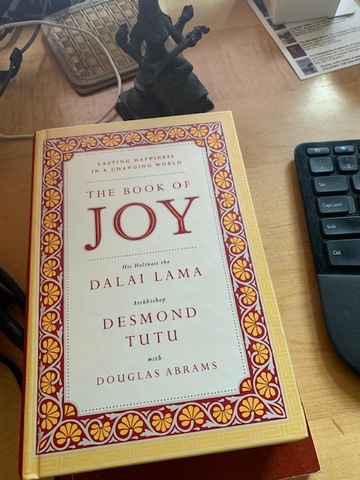
I had planned this as my next post, but it's even more appropriate after the recent passing of Archbishop Desmond Tutu, a man who was a great gift to humankind, with so much wisdom to impart, in this case in collaboration with the HH the Dalai Lama in The Book of Joy, with Douglas Abrams, (Avery/Penguin 2016)
And because of my own personal quest to maintain happiness (and defend it as appropriate) in the midst of the current world, this 'book report-style' post is enormous.
Here are the top six quotes that moved me – and the rest are in ten pages (wow!) sorted by topic by me*...
- "The three factors that seem to have the greatest influence on increasing our happiness are our ability to reframe our situation more positively, our ability to experience gratitude, and our choice to be kind and generous." Page 49
- "Grateful people do not seem to ignore or deny the negative aspects of life; they simply choose to appreciate what is positive as well. Page 247 "Gratitude moves us away from the narrow-minded focus on fault and lack into the wider perspective of benefit and abundance. Page 242
- "It is that ability to see wonder, surprise, possibility in each experience and each encounter that is a core aspect of joy. Page 241
- "Schadenfreude is an outgrowth of envy. Mudita [being heartened by other's joy] is a natural outgrowth of compassion." Page 141
- "Unforgiveness seems to compromise the immune system ... disrupting the production of important hormones and the way that our cells fight off infections. Page 237
- Resignation and cynicism are easier, more self-soothing postures that do not require the raw vulnerability and tragic risk of hope." Page 122
What is Joy?
"There is a Buddhist teaching that says what causes suffering in life is a general pattern of how we relate to others: Read More








